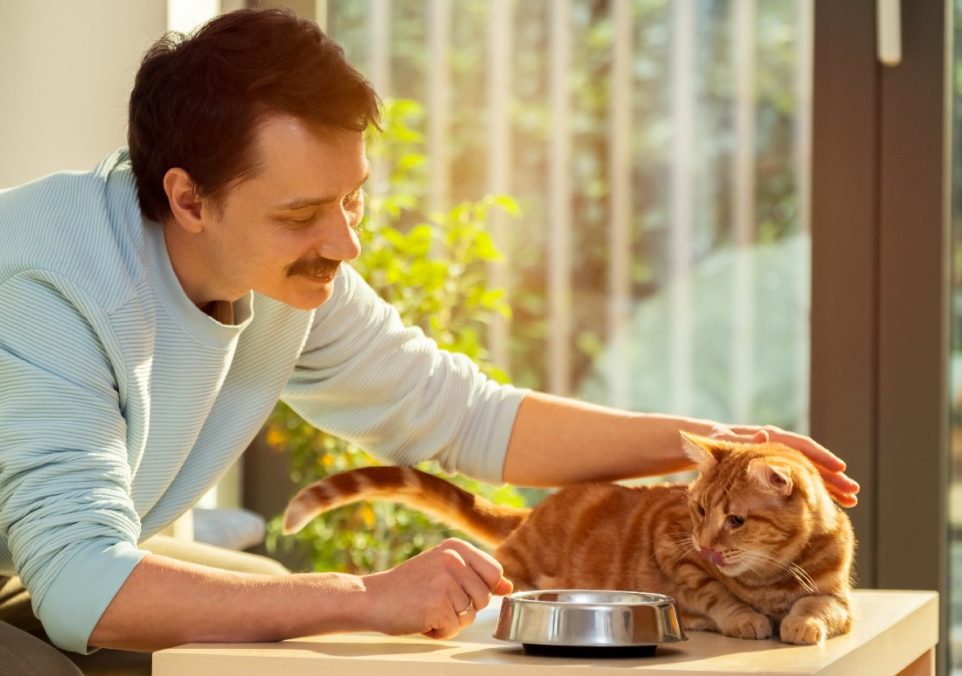How Often Should You Feed Your Cat? Let’s Find Out!

As a cat owner, providing proper nutrition is a top priority to ensure your feline friend’s health and well-being. One of the key aspects of cat care is determining how often to feed your cat and how much food to offer. While each cat is unique, adhering to a feeding schedule that aligns with their nutritional needs is essential. In this comprehensive guide, we’ll dive into the factors that influence feeding frequency and portion size for cats. Whether you’re a new cat owner or looking to refine your feeding routine, these tips will help you strike the perfect balance between nourishment and a happy, healthy kitty.
Understanding Your Cat’s Dietary Needs
Cats are obligate carnivores, meaning their diet is primarily based on animal-based protein. To meet their nutritional requirements, it’s important to select high-quality commercial cat food that offers a balance of proteins, fats, and essential nutrients. Consult your veterinarian to determine the appropriate type of cat food, whether it’s dry kibble, wet canned food, or a combination of both.
Feeding Frequency: Kitten vs. Adult Cat
Kittens have rapid growth and development needs, necessitating more frequent feeding compared to adult cats. For kittens up to six months old, offering three to four meals a day is recommended. As your kitten matures into an adult cat, you can transition to a feeding schedule of two to three meals daily. Consistency in feeding times helps establish a routine that your cat will come to expect.
Portion Control and Obesity Prevention
Obesity is a common health concern for cats, and portion control plays a pivotal role in preventing excessive weight gain. Consult your veterinarian to determine the appropriate portion size based on your cat’s age, weight, activity level, and overall health. Feeding guidelines on cat food labels can provide a starting point, but individual variations may require adjustments. Avoid overfeeding and try using an automatic cat feeder to maintain healthy body weight and lifestyle for your cat.
Avoid Free Feeding
Free feeding, where food is left out for your cat to eat as they please, can lead to overconsumption and weight gain. Instead, opt for scheduled feeding times. Not only does this allow you to monitor your cat’s intake, but it also helps establish a routine and prevents the food from becoming stale or unappetizing.
Feeding Times: Consistency is Key
Cats thrive on routine, and feeding times are no exception. Establish consistent feeding times that work for both you and your cat. Feeding around the same times each day helps regulate their digestive system and prevents overeager or vocal mealtime behavior. While it’s okay to be flexible occasionally, maintaining a predictable schedule provides a sense of security for your feline friend.
Hydration Matters
In addition to proper nutrition, ensuring your cat stays adequately hydrated is crucial. Incorporate wet canned food into their diet, as it contains higher moisture content than dry kibble. You can also offer a clean and easily accessible water source to encourage regular drinking.
Monitor Your Cat’s Condition
Regularly assess your cat’s body condition, as their nutritional needs may change over time. If you notice weight loss, gain, or other changes in their health, consult your veterinarian to make necessary adjustments to their feeding routine. They may also benefit from a weight loss or weight gain supplement for cats.
Conclusion
Creating a feeding routine that aligns with your cat’s dietary needs, age, and lifestyle is an integral part of responsible cat ownership. By understanding the principles of feeding frequency, portion control, and maintaining consistency, you’ll ensure that your cat receives the nourishment they require to thrive. Consult your veterinarian for personalized recommendations, and remember that building a strong foundation of nutrition not only supports your cat’s physical health but also strengthens the bond between you and your feline companion.
Your Pet’s Best Interest, Always
At Pet Institute, we take pet care seriously. We're dedicated to transparency, impartiality, and the well-being of your pets in every article, review, and recommendation we provide. Our unwavering commitment to these principles ensures that you, our valued reader, always receive reliable and unbiased information. Let us be your trusted guide in the world of pet care and companionship.